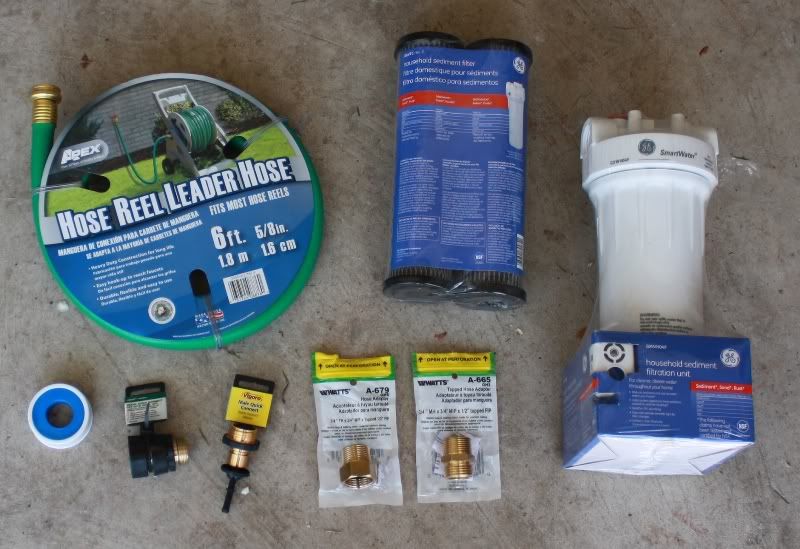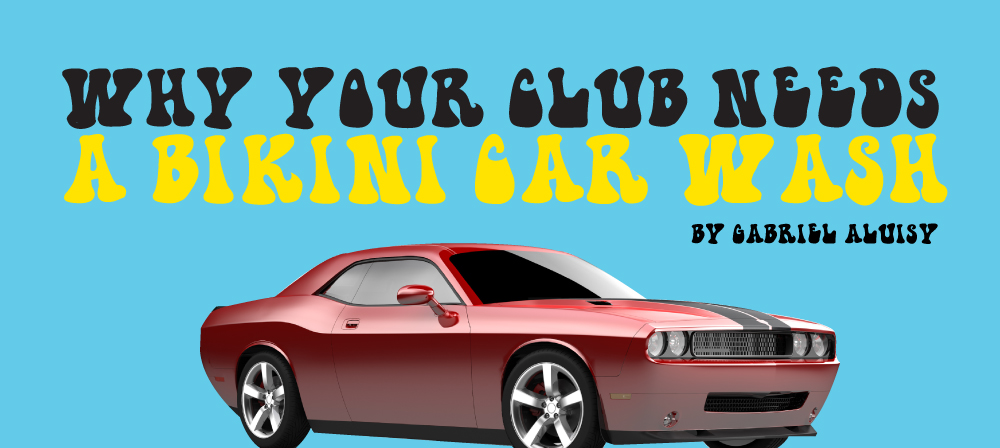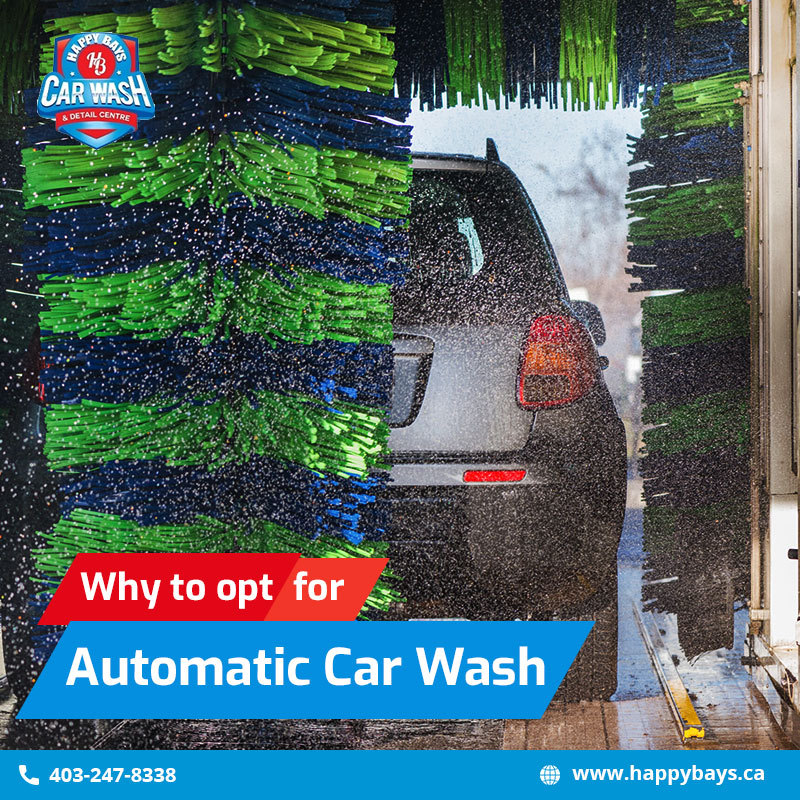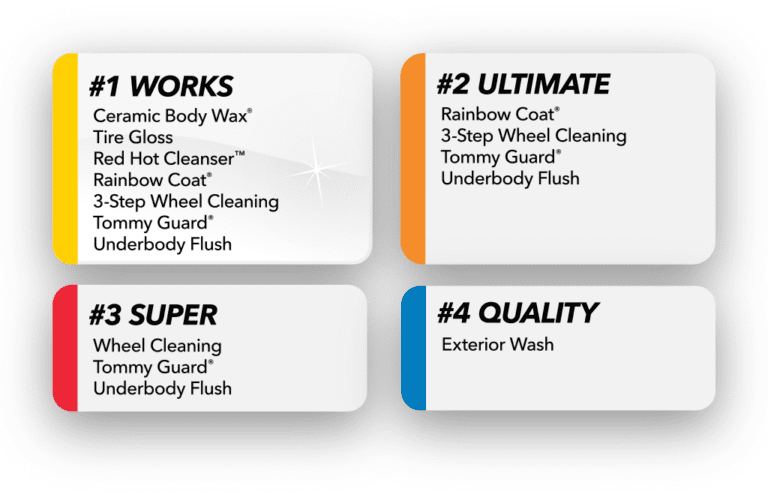
Are you tired of those annoying water spots that seem to appear out of nowhere after you wash your car? You spend all that time meticulously cleaning and waxing, only to be greeted by an army of unsightly marks the moment it dries. It’s frustrating, isn’t it? It feels like you’re fighting a losing battle against the elements, and Mr. Clean and his fancy car wash products just aren’t cutting it.
The truth is, achieving a truly spot-free finish requires more than just soap and water. It’s about understanding the science behind water spots and employing the right techniques and products to combat them. Many commercial car washes rely on harsh chemicals and expensive equipment, but there’s a way to get professional-level results right in your own driveway, without breaking the bank.
Imagine the satisfaction of seeing your car gleaming in the sunlight, free from those pesky water spots that detract from its beauty. You can achieve that showroom shine with a little knowledge and some elbow grease. We’re about to delve into the world of DIY car washing, revealing the secrets to achieving a flawless, spot-free finish that will make your neighbors jealous. No more settling for mediocre results – it’s time to take control and master the art of car care.
Think about the pride you’ll feel, knowing that you’ve achieved such a stunning result yourself. You’ll not only save money, but you’ll also gain a deeper understanding of how to properly care for your vehicle’s finish. It’s an investment in your car’s appearance and longevity. Plus, there’s something incredibly rewarding about the hands-on process of detailing your car yourself.
So, if you’re ready to ditch the expensive car washes and learn how to achieve a professional-quality finish at home, then you’re in the right place. Prepare to embark on a journey to discover the secrets of achieving that elusive, perfect shine. We’re talking about the ultimate solution: a Spot Free Car Wash DIY (Screw you Mr. Clean. Get ready to say goodbye to water spots forever and hello to a car that turns heads wherever you go.
Understanding Water Spots: The Enemy of a Clean Car
The Science Behind Water Spots
Water spots aren’t just an aesthetic nuisance; they’re the result of minerals and impurities dissolved in water. When water evaporates, these minerals are left behind, creating a visible residue on your car’s paint. The type of minerals and their concentration can vary depending on your water source, which is why some areas are more prone to water spots than others.
These mineral deposits, primarily calcium and magnesium, bind to your car’s clear coat, making them difficult to remove with just a simple wash. Over time, these deposits can etch into the paint, causing permanent damage and requiring professional detailing to correct.
Understanding the composition of water spots is crucial in determining the best approach to remove them. Acidic solutions are often effective in dissolving the alkaline mineral deposits, but it’s essential to use them carefully to avoid damaging your car’s finish.
Different types of water spots exist, ranging from light, easily removable spots to severe, etched-in spots. Identifying the severity of the water spots will help you choose the appropriate cleaning method and products.
Preventing water spots in the first place is always the best approach. This involves using soft water, drying your car thoroughly after washing, and applying a protective layer of wax or sealant.
Hard Water vs. Soft Water: A Key Distinction
Hard water contains a high concentration of minerals, primarily calcium and magnesium. Soft water, on the other hand, has a much lower mineral content. Using hard water to wash your car significantly increases the likelihood of water spots forming.
If you live in an area with hard water, consider investing in a water softener or using a water filter attachment for your garden hose. This can dramatically reduce the mineral content of the water you use to wash your car.
You can test your water hardness using a simple water hardness test kit, which is readily available at most hardware stores. This will give you a clear indication of whether you need to take steps to soften your water.
Even if you use soft water, it’s still important to dry your car thoroughly after washing to prevent any remaining minerals from leaving spots.
The difference between hard and soft water is night and day when it comes to achieving a spot-free finish. Soft water is your best friend in the fight against water spots.
The Impact of Environmental Factors
Environmental factors, such as sunlight and temperature, can exacerbate the formation of water spots. Direct sunlight can cause water to evaporate more quickly, leaving behind a higher concentration of mineral deposits.
Washing your car in direct sunlight should be avoided whenever possible. Instead, choose a shady area or wash your car in the early morning or late evening when the sun is less intense.
High temperatures can also accelerate the evaporation process, leading to more severe water spots. Washing your car on a cool day is ideal.
Rainwater can also contribute to water spots, especially if it’s acidic or contains pollutants. Regularly washing your car, even just with water, can help prevent the buildup of these contaminants.
Protecting your car with a layer of wax or sealant provides a barrier against environmental factors and makes it easier to remove water spots.
Assembling Your Spot-Free Car Wash Arsenal
Essential Cleaning Supplies
Before diving into the Spot Free Car Wash DIY (Screw you Mr. Clean process, gathering the right supplies is paramount. You’ll need a high-quality car wash soap, preferably one that’s pH-balanced and specifically designed for automotive finishes. Avoid using household detergents, as they can strip away wax and damage your paint.
Microfiber wash mitts are essential for gently lifting dirt and grime without scratching the paint. Use separate wash mitts for the upper and lower portions of your car to prevent transferring dirt from the dirtier areas to the cleaner ones.
Two buckets are a must: one for soapy water and one for rinsing your wash mitt. This prevents you from constantly reintroducing dirt into the soapy water.
A high-quality microfiber drying towel is crucial for achieving a spot-free finish. These towels are designed to absorb large amounts of water without leaving streaks or scratches.
Consider investing in a detailing brush for cleaning hard-to-reach areas, such as emblems, grilles, and door jambs.
Spot-Free Drying Aids: The Secret Weapon
Spot-free drying aids are specifically formulated to reduce water surface tension, causing water to sheet off your car’s surface more quickly. This minimizes the amount of water that remains on the paint and reduces the likelihood of water spots forming.
These drying aids are typically applied after rinsing the car and before drying it with a microfiber towel. They can be applied using a spray bottle or a foam cannon.
Choose a drying aid that’s compatible with your car’s wax or sealant. Some drying aids can actually enhance the performance of your existing wax or sealant.
Follow the manufacturer’s instructions carefully when applying a drying aid. Over-application can sometimes leave a residue.
Experiment with different drying aids to find one that works best for your car’s paint and your local water conditions.
Water Filtration Systems: The Ultimate Solution
For the ultimate spot-free car wash experience, consider investing in a water filtration system. These systems remove minerals and impurities from your water source, providing you with nearly pure water that won’t leave water spots.
There are several types of water filtration systems available, ranging from simple hose-end filters to more elaborate whole-house systems.
Hose-end filters are a cost-effective option for occasional car washing. They attach directly to your garden hose and filter the water as it passes through.
Whole-house water softeners are a more permanent solution that softens all the water in your home, including the water you use for car washing. These systems are more expensive but offer long-term benefits.
Reverse osmosis (RO) systems are another option for achieving ultra-pure water. These systems use a membrane to filter out even the smallest impurities.
The Step-by-Step Spot-Free Car Wash Process
Pre-Washing: Removing Loose Dirt and Debris
Before you even touch your car with a wash mitt, it’s crucial to pre-wash it to remove loose dirt and debris. This prevents you from grinding dirt into the paint during the washing process, which can cause scratches and swirl marks.
Rinse your car thoroughly with water, starting from the top and working your way down. Use a strong stream of water to dislodge any loose dirt.
Consider using a pressure washer for pre-washing. The high-pressure stream of water can effectively remove stubborn dirt and grime.
If you’re using a pressure washer, be sure to use a wide-angle nozzle to avoid damaging your car’s paint. Maintain a safe distance between the nozzle and the car’s surface.
Pay special attention to areas that tend to accumulate dirt, such as wheel wells, rocker panels, and bumpers.
The Two-Bucket Wash Method: Minimizing Scratches
The two-bucket wash method is a proven technique for minimizing scratches and swirl marks during the washing process. It involves using two buckets: one for soapy water and one for rinsing your wash mitt.
Fill one bucket with your chosen car wash soap and water, following the manufacturer’s instructions for dilution. Fill the other bucket with clean water.
Dip your wash mitt into the soapy water and gently wash a section of your car. Then, rinse the wash mitt thoroughly in the clean water bucket before re-dipping it into the soapy water.
This prevents you from constantly reintroducing dirt into the soapy water, which can scratch your car’s paint.
Work in small sections, washing and rinsing each section before moving on to the next.
Rinsing for Spot-Free Results
Rinsing is a critical step in achieving a spot-free finish. After washing your car, rinse it thoroughly with water to remove all traces of soap.
Use a strong stream of water to ensure that all the soap is removed. Pay special attention to crevices and areas where soap can accumulate.
Consider using a sheeting nozzle on your garden hose. This type of nozzle creates a wide, flat stream of water that helps to sheet the water off your car’s surface, reducing the amount of water that remains on the paint.
If you’re using a water filtration system, this is the time to use it. Rinse your car with filtered water to prevent water spots from forming.
Rinse from top to bottom to avoid re-contaminating previously rinsed areas.
Drying Techniques for a Flawless Finish
The Microfiber Towel Method: Gentle and Effective
The microfiber towel method is a popular and effective way to dry your car without leaving streaks or scratches. Microfiber towels are incredibly absorbent and gentle on your car’s paint.
Use a large, high-quality microfiber drying towel. Look for towels specifically designed for automotive drying.
Start by blotting the water from your car’s surface. Avoid rubbing the towel across the paint, as this can cause scratches.
Once you’ve blotted most of the water, you can gently wipe the remaining water from the surface.
Fold the towel frequently to use a clean section of the towel. This prevents you from reintroducing dirt onto the paint.
Using a Leaf Blower: A Touchless Drying Option
A leaf blower can be a surprisingly effective way to dry your car without touching the paint. This is a great option for those who are concerned about scratching their car’s finish.
Use a leaf blower with a nozzle that directs the air stream. Start at the top of your car and work your way down, blowing the water off the surface.
Be careful not to hold the leaf blower too close to the car’s surface, as this can damage the paint.
A leaf blower is particularly effective for drying hard-to-reach areas, such as around mirrors and trim.
You may need to use a microfiber towel to touch up any remaining water spots after using the leaf blower.
Combining Methods for Optimal Results
For the best results, consider combining the microfiber towel method with the leaf blower method. Use the leaf blower to remove the majority of the water, then use a microfiber towel to blot up any remaining water spots.
This approach minimizes the amount of contact between the towel and the paint, reducing the risk of scratches.
It also speeds up the drying process, allowing you to achieve a spot-free finish more quickly.
Experiment with different techniques to find what works best for your car and your drying style.
Remember, the goal is to remove the water as quickly and gently as possible to prevent water spots from forming.
Maintaining Your Spot-Free Shine: Long-Term Care
Regular Washing: Preventing Buildup
Regular washing is essential for maintaining your spot-free shine. Washing your car at least once a week can prevent the buildup of dirt, grime, and mineral deposits.
The frequency of washing will depend on your local climate and driving conditions. If you live in an area with a lot of dust or rain, you may need to wash your car more frequently.
Even if you don’t have time for a full wash, a quick rinse can help remove loose dirt and prevent water spots from forming.
Use the same spot-free washing techniques that you use for a full wash, including the two-bucket wash method and a spot-free drying aid.
Consistent maintenance is key to keeping your car looking its best.
Waxing and Sealing: Protecting Your Paint
Waxing and sealing your car’s paint is crucial for protecting it from the elements and preventing water spots from etching into the clear coat.
Wax provides a sacrificial layer of protection that repels water and prevents contaminants from adhering to the paint.
Sealants offer a longer-lasting layer of protection and are more resistant to detergents and environmental factors.
Apply wax or sealant every few months to maintain a protective barrier on your car’s paint.
Choose a wax or sealant that’s specifically designed for automotive finishes and follow the manufacturer’s instructions carefully.
Addressing Existing Water Spots: Correction Techniques
If you already have water spots on your car’s paint, there are several correction techniques you can use to remove them.
For light water spots, you can try using a water spot remover or a mild polishing compound. Apply the product to a microfiber towel and gently rub the affected area.
For more severe water spots, you may need to use a more aggressive polishing compound or even a clay bar. These techniques require more skill and should be performed carefully to avoid damaging the paint.
If you’re not comfortable performing these techniques yourself, consider hiring a professional detailer.
Preventing water spots is always the best approach, but if they do occur, prompt and effective correction can minimize the damage.
Troubleshooting Common Spot-Free Car Wash Issues
Streaking After Drying
Streaking after drying is a common issue that can occur even when using a microfiber towel. This is often caused by leftover residue from the car wash soap or drying aid.
To prevent streaking, make sure you rinse your car thoroughly after washing. Use a strong stream of water to remove all traces of soap.
If you’re using a drying aid, follow the manufacturer’s instructions carefully. Over-application can sometimes leave a residue that causes streaking.
Use a clean, dry microfiber towel to buff the surface after drying. This can help remove any remaining residue and eliminate streaks.
Ensure your microfiber towels are clean and free from lint. Wash them regularly with a detergent that doesn’t contain fabric softener.
Water Spots Appearing After Washing
If you’re still seeing water spots after washing your car, despite using spot-free techniques, there are several possible causes.
Your water source may still be too hard, even if you’re using a water filter. Consider investing in a more effective water filtration system or using distilled water for the final rinse.
You may not be drying your car thoroughly enough. Make sure you’re using a high-quality microfiber drying towel and blotting the water from the surface effectively.
Environmental factors, such as sunlight and temperature, can also contribute to water spot formation. Wash your car in a shady area and on a cool day.
Your car’s wax or sealant may be wearing thin. Apply a fresh coat of wax or sealant to protect your paint and prevent water spots from etching into the clear coat.
Swirl Marks and Scratches
Swirl marks and scratches are a common issue that can occur during the washing process. They’re typically caused by using abrasive materials or techniques.
To prevent swirl marks and scratches, always use the two-bucket wash method and wash mitts. Avoid using sponges or brushes, as they can trap dirt and scratch your car’s paint.
Be gentle when washing your car. Avoid applying too much pressure, as this can grind dirt into the paint.
If you already have swirl marks and scratches, you can try using a polishing compound to remove them. However, this should be done carefully to avoid damaging the paint.
Consider hiring a professional detailer to remove swirl marks and scratches if you’re not comfortable doing it yourself.
Conclusion: Embrace the Spot-Free Life!
Congratulations! You’ve now armed yourself with the knowledge and techniques needed to achieve a stunning, spot-free finish on your car. Say goodbye to those frustrating water spots and hello to a showroom shine that will turn heads wherever you go. Remember, achieving the Spot Free Car Wash DIY (Screw you Mr. Clean is about more than just washing your car; it’s about understanding the science behind water spots and taking proactive steps to prevent them from forming.
The key to success lies in using the right products, employing proper washing and drying techniques, and maintaining a consistent car care routine. By following the steps outlined in this guide, you’ll be well on your way to achieving a professional-quality finish right in your own driveway. And the best part? You’ll save money while gaining a deeper appreciation for the art of car detailing.
Don’t be afraid to experiment and fine-tune your approach to find what works best for your car and your local water conditions. Car detailing is a journey, not a destination. The more you practice, the better you’ll become at achieving that elusive, perfect shine. Remember, the Spot Free Car Wash DIY (Screw you Mr. Clean is achievable with the right dedication.
Now that you’ve mastered the art of spot-free car washing, why not explore other aspects of car care? Check out our other articles on topics such as waxing, sealing, interior detailing, and engine bay cleaning. There’s always something new to learn in the world of automotive detailing.
Thank you for joining us on this spot-free car wash adventure. We hope you found this guide informative and helpful. Now go out there and make your car shine!
- Use Soft Water.
- Wash in the Shade.
- Use Quality Car Wash Soap.
- Employ the Two-Bucket Method.
- Rinse Thoroughly.
- Use a Drying Aid.
- Dry with Microfiber Towels.


